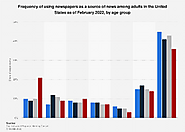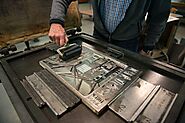-
About
- About Listly
- Community & Support
- Howto
- Chrome Extension
- Bookmarklet
- WordPress Plugin
- Listly Premium
- Privacy
- Terms
- DMCA Copyright
- © 2010-2025 Boomy Labs

 Mary Butler
Mary Butler
Listly by Mary Butler
Use this list to help answer a minimum of three questions from the Questions About Newspapers Tic-Tac-Toe board.

At Democracy Fund, we see every day how local news strengthens democracy. People rely on local news to figure out who to vote for, how to speak up at school board meetings, how to run for local office, where to find vaccines, when to organize for change, and more. From daily reporting that equips people to act, to huge investigations that reveal corruption, the health of local news is bound up with the health of our democracy.

How do newspapers/journalists choose what to write about?

How do newspaper editors decide what to put on the front page?
This is an existential question when you are the front page or homepage editor of a newspaper, and the answer is, drumroll… it depends. Take a look at the front pages above from four newspapers in New York City on Feb. 21, 2020. They all have different lead stories but some overlapping ones as well.

A survey held in February 2022 revealed that most consumers never use newspapers as a source of news, and only 21 percent of adults aged 65 or above (those who engage with newspapers the most) reported reading newspapers every day.

Newspapers are a critical part of the American news landscape, but the newspaper industry has been hit hard as more and more Americans consume news online causing newspaper circulation to decline. See more newspaper industry statistics.

A newspaper of record is a major national newspaper with large circulation whose editorial and news-gathering functions are considered authoritative and independent; they are thus "newspapers of record by reputation" and include some of the oldest and most widely respected newspapers in the world. The level and trend in the number of "newspapers of record by reputation" is regarded as being related to the state of press freedom and political freedom in a country.[1][2]

New research finds slightly more than half of all U.S. adults subscribe to news in some form — and roughly half of those to a newspaper.

Overall, 58 percent of subscribers describe themselves as primarily print-oriented, and 28 percent say they are primarily digital. Among just newspaper subscribers, even more (75 percent) describe themselves as print-oriented. But these numbers look very different when we break people down by demographic groups.

In the U.S., 93% of adults get at least some news online (either on mobile or desktop), and the internet has become the home of both legacy, print, radio and broadcast news outlets and new, digital news outlets. See more online news industry statistics.

Phillip Reid and his wife Jeanne Ann publish 10 printed newspapers across Oklahoma and operate two printing plants in the state. When a transportation crunch left them with just a few remaining rolls of newsprint, it spelled big trouble.
